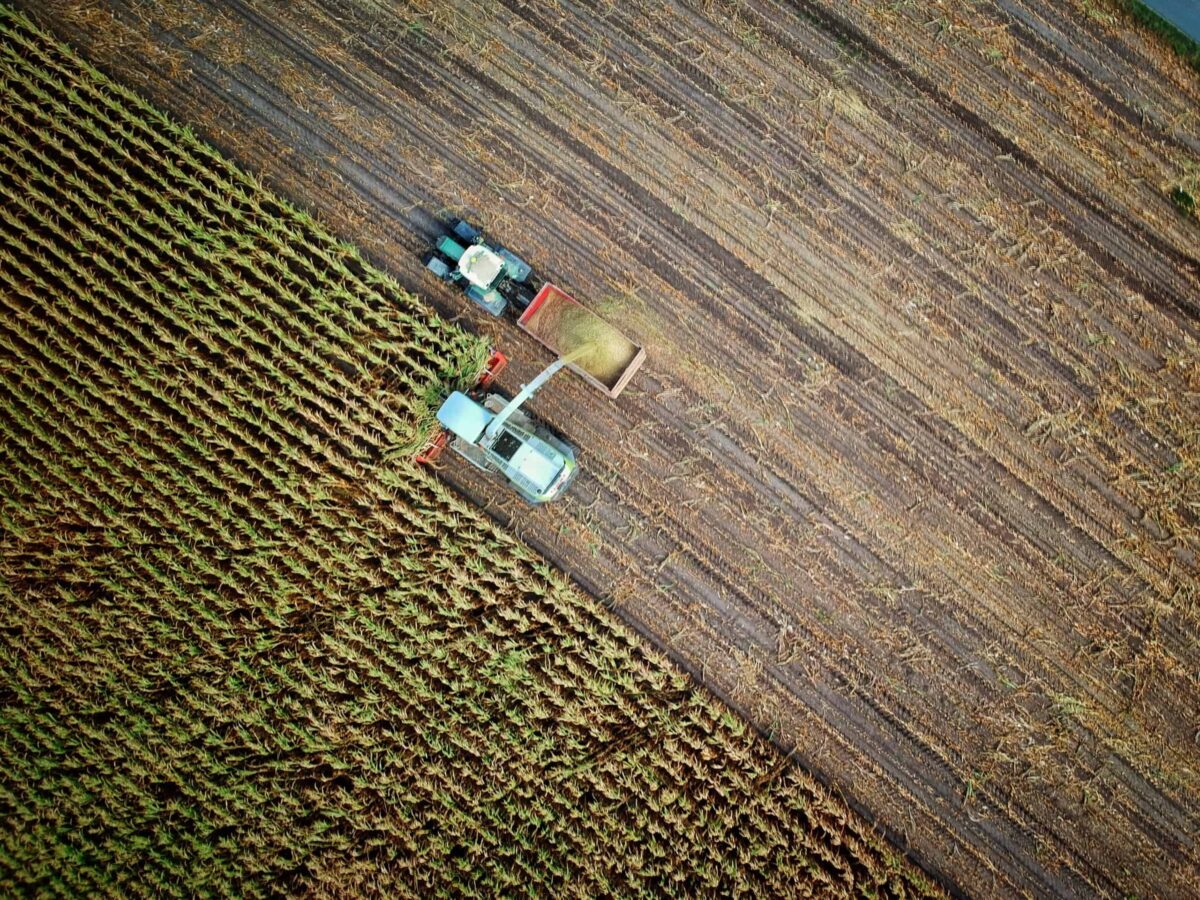ESG Considerations for Canadian Agri-Business

More than ever before, the Canadian agriculture and food sector is recognizing the importance of performing well from an environmental, social and corporate governance (ESG) perspective.
The ag sector is intimately connected to the environment. It not only has impacts on the environment, but is significantly impacted by environmental changes. Consumers are increasingly conscious of the impact their decisions have on the environment and their communities. They are demanding transparency from producers and choosing to support sustainably produced products. A focus on ESG strategy can help the Canadian agriculture and food sector support positive social and environmental outcomes while driving sustainable business value.
Agriculture is the world’s largest industry, employing more than 1 billion people, generating more than US$1.3 trillion of food annually and using 50% of the earth’s habitable land.[1] Within Canada, the federal government has noted that agri-business is one of the sectors with the highest economic growth potential, currently making up 7.4% of the country’s GDP.[2] However, agri-business is also vulnerable to the effects of climate change and often places significant pressures on the environment, including through extensive land use, carbon intensive farming practices and reliance on fertilizers. In conjunction with Canada’s 2030 Emissions Reduction Plan[3], approximately $900 million has been earmarked by the federal government for agricultural climate initiatives such as investment in more energy-efficient farm equipment over the next eight years. In embracing ESG practices, agri-businesses can position themselves for future growth, funding and business viability under changing market and environmental conditions.
Innovation and Technology Critical
To facilitate sustainable growth, the Canadian agriculture and food sector will need to focus on innovation and technology. In recent years, many agri-businesses have focused on developing value-added processing facilities for Canadian-grown crops. With the increasing global demand for plant-based proteins, Canada has seen significant research and investment devoted to pulse processing facilities over the past 20 years[4]. Many of the facilities are located in Western Canada to capitalize on the sourcing of local crops such as peas, chickpeas and lentils[5].
Another significant area of opportunity for the agriculture and food sector relates to carbon offsets. In June 2022, the federal government announced that it was working to establish a set of federal greenhouse gas (GHG) offset protocols for the generation of offset credits, including offset protocols for enhanced soil organic carbon and livestock feed management [6]. Provincial jurisdictions are also working to establish carbon offset credit markets with protocols specific to agricultural activities. Alberta has a well-established system in place for generating and trading agricultural carbon offsets for conservation cropping, reducing greenhouse gas emissions from feed cattle, distributed renewable energy generation and anaerobic decomposition of agricultural materials[7]. However, Alberta’s system is still underutilized by the agriculture and food sector due to a lack of regulatory certainty and limited financial benefit compared to the implementation costs[8]. Although much work needs to be done to clarify, stabilize and incentivize agricultural carbon offset systems for Canadian farmers, the emergence of the carbon offset market will likely factor prominently in the ESG strategies of many agri-businesses going forward as carbon pollution pricing continues to escalate each year.
Sector-Specific ESG Guidance
Agri-businesses have a variety of options when considering how to best assess and report their ESG impacts. In recognition of both the high environmental impact of the agriculture and food sector, which contributes approximately one-third of global GHG emissions[9], and the projection that the sector will have to double in size by 2050 to meet growing consumer demand, ESG standard and reporting organizations have developed agricultural-specific ESG standards and reporting metrics. Most recently, the Global Reporting Initiative (GRI) released GRI 13: Agriculture, Aquaculture and Fishing Sectors 2022[10]. Other organizations that have released agricultural standards and reporting guidance include Canada’s National Index on Agri-Food Performance[11], which helps agri-businesses assess their ESG impacts; the Science Based Targets Initiative (SBTi), which helps businesses set targets to reduce their ESG impacts; and the Sustainable Accounting Standards Board (SASB), which helps businesses report on and understand how ESG impacts their financial outlook.
The types of ESG impacts most often considered in agriculture and food sector reporting and target setting include energy consumption, biodiversity, GHG emissions, climate resilience and adaptation, water management, gender balance, food safety and security, Indigenous partnerships and relationships, and fair labour practices. Identifying ESG impacts is the first step in mitigating those impacts on the environment, the business and society.
Managing Divestment Risk & ESG Activism
ESG reporting is increasingly under scrutiny by a variety of stakeholders including investors and financial institutions. In fact, 75% of institutional investors say they may divest from companies with poor ESG performance.[12] The Canada Pension Plan, Ontario Teachers’ Pension Plan and the Caisse de dépôt et placement du Québec (CDPQ) have all committed to net-zero investment portfolios. These net-zero plans may be achieved through either divesting in high-emitting sectors or through exerting pressure on high-emitters to force them to reduce emissions. In either scenario, commitment to good ESG practices and reporting will enable companies to better attract and maintain long-term investors.
In addition to the risk of divestment, corporations without robust ESG policies and reporting risk being targets of activist investors, as discussed in a previous blog. This is especially true in the agriculture and food industry. In 2021, Ceres published an investor-led initiative to work with 50 of the highest-emitting public food companies in North America to increase their reporting of GHG emissions, set ambitious reduction targets and create climate action plans.[13] Through this initiative, Ceres is seeking to directly engage these companies as well as influence other investors in the agriculture and food industry to increase pressure to address climate change. Other examples of activist investors include a letter sent from 120 advocate groups to institutional investors calling on them to pressure Tyson Foods to implement worker safety measures to address the number of COVID-19 cases impacting employees[14]. In response to activist ESG pressure, several organizations have created programs intended to help industry demonstrate that it is operating in a sustainable manner. A recent example of such a program is the Farm Credit Canada Incentive Program, which recognizes Canadian beef producers that certify to sustainability standards set by the Canadian Roundtable for Sustainable Beef.
Creating a robust ESG plan makes good business sense and can insulate agri-businesses from divestment and investor activism. Canadian agri-businesses need to evaluate their ESG policies, report on their social and environmental impacts, and set targets to mitigate negative impacts and capitalize on positive opportunities. The MLT Aikins ESG group has wide-ranging experience advising clients in the agriculture and food sector on their ESG strategies. Contact us to learn more.
[1] https://www.worldwildlife.org/industries/sustainable-agriculture (accessed March 4, 2022)
[2] https://agriculture.canada.ca/en/canadas-agriculture-sectors/overview-canadas-agriculture-and-agri-food-sector (accessed March 4, 2022)
[3] https://www.canada.ca/en/services/environment/weather/climatechange/climate-plan/climate-plan-overview/emissions-reduction-2030.html (accessed June 20, 2022)
[4] https://saskpulse.com/news-events/news/domestic-pulse-processing-is-on-the-rise-thanks-to-canadian-development-eff/ (accessed June 20, 2022)
[5] https://pulsecanada.com/pulse/what-is-a-pulse (accessed June 20, 2022)
[6] https://www.canada.ca/en/environment-climate-change/news/2022/06/canada-launches-greenhouse-gas-offset-credit-system-to-support-a-clean-green-economy.html (accessed June 20, 2022)
[7] https://www.alberta.ca/agricultural-carbon-offsets-overview.aspx (accessed June 20, 2022)
[8] https://www.policyschool.ca/wp-content/uploads/2022/04/JSC14_CarbCredSystemsAgric.Lokuge.Anders.pdf
[9] https://www.ceres.org/climate/ambition2030/food#join-the-initiative
[10] https://www.globalreporting.org/standards/standards-development/sector-standard-project-for-agriculture-aquaculture-and-fishing/
[11] https://www.agrifoodindex.ca/
[12] https://www.ey.com/en_gl/news/2021/11/three-quarters-of-institutional-investors-say-they-may-divest-from-companies-with-poor-environmental-track-records
[13] https://www.ceres.org/climate/ambition2030/food
[14] https://talkbusiness.net/2020/07/activist-groups-ask-tyson-foods-institutional-investors-to-address-covid-19-crisis/ (accessed March 31, 2022)




